Drain Repair Cost
Last updated 20th December, 2023
Are you in need of drain repairs?
This article discusses all you need to know about drain repairs. We look into the different types of drain repair, drain problems and more! We also explain the expected costs and labour fees involved.
Let's get started!
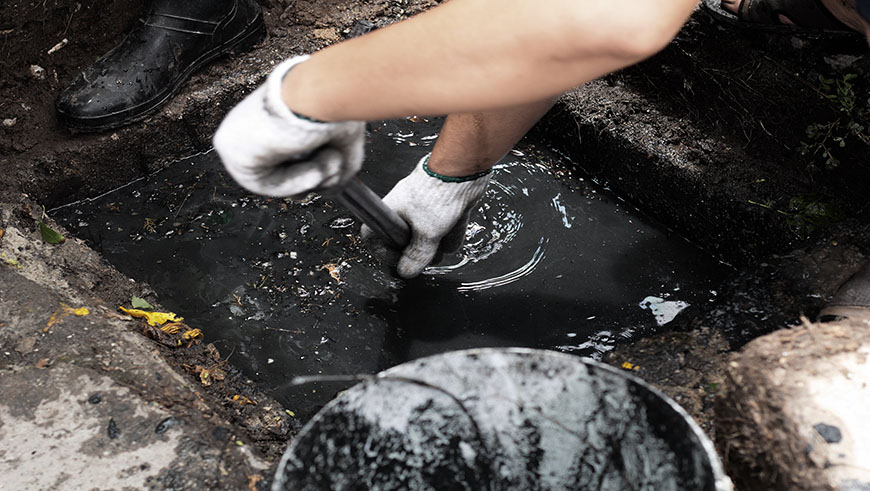
How Much Does It Cost to Repair a Broken Drain?
Repairing a broken drain line costs between £200 and £2,000. This is because problems with drains can vary from a simple blockage and minor cracks to more substantial breaks and other fundamental issues that require complete replacement of your drain line.
Repairing a minor problem such as a drain line crack or a displaced pipe is likely to cost around £200 to fix. However, this cost does depend on easy access to the problem. Some repairs require digging up your drains, whereas others can be done by feeding a patch liner through from an access point.
Bigger issues such as repairing collapsed drains or relocating your drains will require new pipework to be installed. This will take more time and materials to fix. So, you can expect to pay between £150 and £400 per metre.
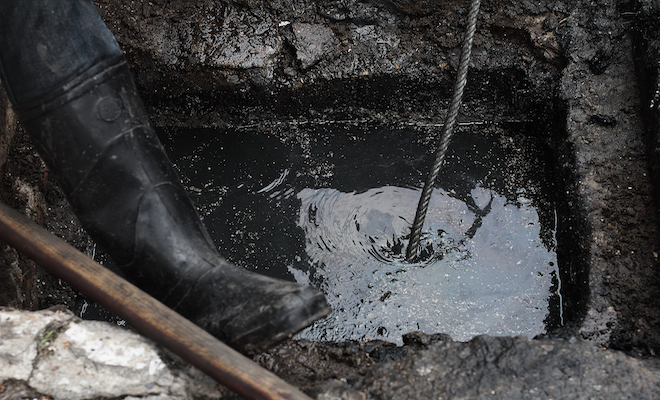
Before any work can take place, of course, you’ll need to get the problem diagnosed. And the easiest way to do this is by having a CCTV or camera survey done. This usually costs between £90 and £150. Although it’s an extra cost, it saves having to dig around to find the problem.
Often, a problem with your drain will cause them to become blocked. So, before any repair work can start, you’ll often need them unblocking first. This costs between £100 and £200.
Of course, there’s more to the repair price than the size of the job. And the location of your drain is one of the biggest factors. Drains aren’t all laid at the same depth, and some drains will run underneath yards, patios and sheds. Plus, if you live in London, prices will end up paying more.
Who you hire may also affect the cost. A local company may charge less than a large, national firm. However, where you live will determine whether there is a choice of companies available to do the work.
Table of Contents
- How much does it cost to repair a broken drain?
- Labour costs and time frames
- Cost affecting factors of repairing a drain line
- What does repairing a drain line entail?
- DIY drain line repairs
- Building regulations for drainage
- Planning permission for drainage
- How to find & hire a draught proof installer
- FAQs
- Sources
Drain Repair Prices
Here’s the average cost to repair your drains by job type:
| Type of repair | Average cost |
|---|---|
| CCTV inspection | £90 - £120 |
| Clearing a blocked drain | £100 - £200 |
| Small repair to a section of pipework | £200 |
| Lining your existing pipework | £80 - £100 per metre |
| Replacing your pipework | £150 - £400 per metre |
| Relocation of drains | £1,000 - £3,500 |
Additional Costs
It’s not always a straightforward broken drain line repair that you need to pay for. There can be additional costs to consider too.
Here’s a few that might crop up:
Drain Unblocking
If your drains are cracked or collapsed, it’s likely the problem was only noticed after your drains became blocked. Before any work can be done to repair your drains, you’ll need to have them unblocked first. This can be done by traditional rods or by forcing jets of water through the pipes. Drain unblocking or jetting will cost, on average, £100 to do.
Moving or Removing Drains
If you’re planning to extend your home, your drains may need moving to a new position to make them accessible and comply with Building Regulations. Removing drains for an extension will cost from £1,000.
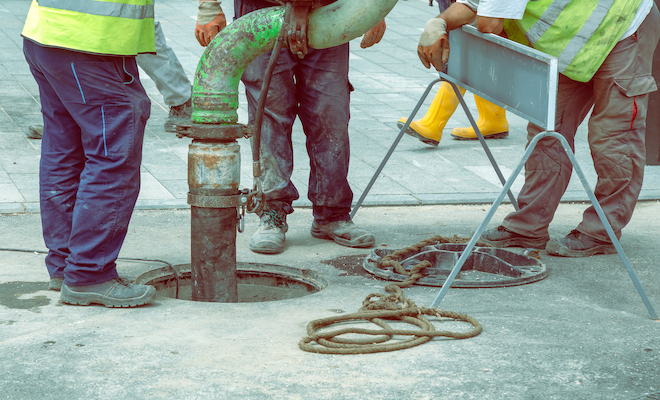
Even though you may not be planning any changes to your home, poorly functioning drains can benefit from being relocated to save repeated problems. Moving them to a new location is likely to cost from £200 to £1,300, depending on the size of the job.
Installing a Soakaway
Installing a soakaway can take extra pressure off your drain line, so you may wish to make this additional improvement. A soakaway provides a way for rainwater to run into the ground rather than channelling it into your drains. Although it costs around £700 to fit, having a soakaway can reduce your water bill.
Adding a Patio or Decking
Drains often run out of the back of the house to the main sewer network, so repairing them can mean digging up your garden.
It’s a good idea to factor in the cost of landscaping your outside space when thinking about drain repair costs.
Plus, it’s a good opportunity to improve your garden space.
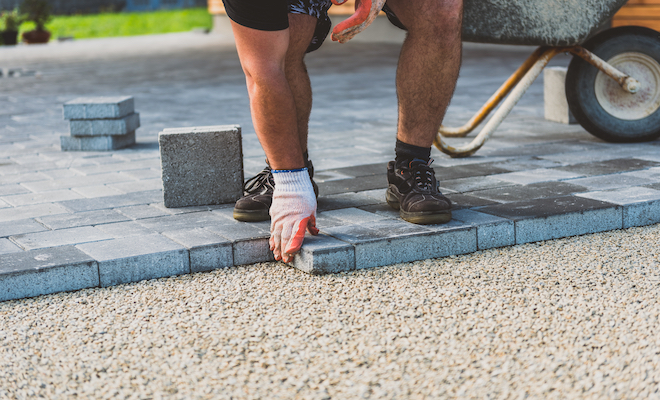
You may wish to add new decking or a patio. Laying a patio will cost an average of £1,800, and installing timber decking will cost from £1,000 to £2,000.
Laying New Turf
Once a new drain line has been fitted, you may need to rectify your garden with new turf. So, this could also be an additional cost for you to consider, along with the drain repair price. Laying new turf will cost you from £150 to £750, depending on the area of lawn that needs replacing and the type of grass you choose.
Cost Breakdown Calculator
The cost of repairing a section of your drains, including materials, labour costs and waste removal — Total Cost: £200
Materials
£80
Labour
£120
Waste Removal
£0
Labour Costs and Time Frames
For drain repairs, the labour costs are usually included in the overall cost of the job. So, it’s useful to know what you’re paying for and how long it should take to do.
Fixing a broken drain line often takes a few initial steps before any actual repair work is carried out.
Firstly, if your drains are blocked, the first course of action will be to clear them. This shouldn’t take longer than two to three hours to do and will cost on average £150.
However, if your drains are causing major problems, such as sewage backing up into your home, you may need an emergency call-out. Although it’s the same amount of work, you will pay a premium for priority treatment. An emergency call-out to a drain repair company is often a flat fee and can double the normal price for drain unblocking.
Once your drain line has been cleared, it should be easier and safer to find the problem. A CCTV survey is the quickest way to do this. Most drain repair companies use this method. This specialist camera is attached to a long line and inserted into your drains. The line is connected to a screen so your drain specialist can see what’s going on below the ground and hopefully diagnose the problem.
This survey shouldn’t take longer than a few hours to complete and costs on average £120.
The largest amount of the time and labour costs are likely to be incurred on the actual repair work to your drains. The time it takes will depend on where the problem is, how big the break is and what type of repair is necessary.
A small patch or lining repair can be done without the need to dig up your entire garden, reducing the amount of time and labour needed to finish the job. It often involves inserting resin-coated material into the drain to seal a crack or small break.
A small repair using this method should only take a few hours to complete, although the resin may need up to five hours to cure. On colder days, this could take longer. With quick access and few materials needed, the cost of a patch or lining repair, with labour included, should only cost around £200.
Of course, it’s not always such a simple repair job. For example, a collapsed drain may need some pipework replacing. This will likely involve digging up your garden, yard or driveway to access the damage and carry out the repairs. Digging up soil or loose ground will only take a few hours, but breaking up an area of concrete could take a day. Plus, the hole will need filling in again afterwards and any surfaces such as concrete or paving stones reinstated.
The good news is that laying new pipework and joining it to the existing pipes doesn’t take long once access has been created. So, this is only likely to add another few hours onto the time. This type of repair, including the labour costs for digging and pipe laying, is between £150 and £400 per metre.
To add new paving slabs will cost £30 to £45 per square metre, and hiring a landscape gardener to install them may cost £110 to £180 per day.
Cost Affecting Factors of Repairing a Drain Line
There are a few different issues that can put repair costs up. So, what are the main factors that affect the cost of fixing a drain line?
Type of Damage
There are quite a few ways in which a drain can become damaged or blocked. And this will often affect how much work is needed. A small crack or drain displacement can sometimes be repaired with a patch or lining. This means it’s quicker and easier to repair, keeping costs to a minimum.
However, bigger problems such as collapsed drains can be trickier to repair, putting up the costs. For example, tree roots can sometimes be responsible for breaking a pipe. So, the tree will need removing to prevent further damage, adding to your drain repair costs.
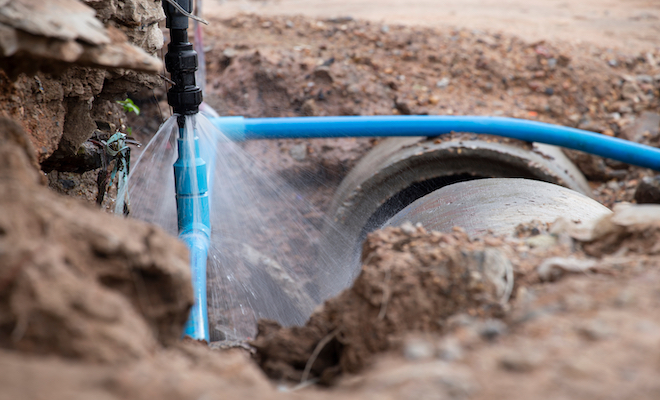
And if broken or collapsed drains have caused other problems such as sunken lawns or damage to house foundations, costs to rectify these issues will add to your costs.
Similarly, if your drain doesn’t have sufficient ‘fall’ – the slope on the drain that allows waste to flow towards the mains sewer – this may need complete replacement.
Repair Method
Different types of drain repair will have different costs attached. And because of the type of damage or break, you may not be able to opt for the cheapest method.
Patch repairs using resin-coated material to cover and seal a crack will avoid the expense of having to dig a trench to access your drains. This type of repair can be done via your inspection chamber. Similarly, a lining repair can often be carried out without the need for digging. This is a modern repair method where you feed a lining tube inside damaged drains.
Where simple repair methods aren’t possible, you’ll need to replace all or part of your drain line with new materials. This means digging a hole, removing the damaged material and fitting new pipework. This is more labour-intensive and time-consuming, so it will be more costly.
Drain Access
Just how easy it is to access the part of your drain that’s broken will certainly affect the cost of the repair.
Access to your drain line is important for these jobs, and you should have an inspection cover somewhere on your property. So, it’s wise to locate this and make sure the cover isn’t obstructed, to prevent unnecessary hold-ups.
Of course, if more access is needed to repair your drains, what’s covering them will also affect the cost. Taking up concrete is much more work than digging up soil or turf to get to your drains. And once the work has been carried out, you’ll need to reinstate your lawn, yard or driveway.
Plus, many drains are located at the rear of properties, where it’s hard to bring in machinery, so work is likely to be carried out by hand, raising costs further.
Where You Live
Where you live can have a big effect on the cost of repairing a drain line. Prices tend to be higher in areas such as London and the South East. However, how many drain specialists operate in your area and are available to do the work can also affect the cost. If you live in a rural location, there may not be much choice of trades, so you’ll have less opportunity to shop around for the best price.
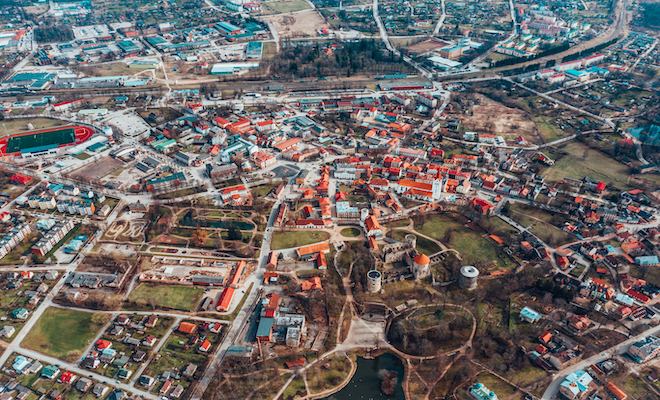
Equally, in busy cities, there may be a high demand for drain companies, which can also reduce your options.
What Does Repairing a Drain Line Entail?
There are different methods for repairing a drain. So, how your specialist repairs your broken drain will depend on the problem, access and type of drain you have. However, it’s likely to follow some, if not all, of these steps:
Clearing the Blockage
A cracked or collapsed pipe often prevents waste from running freely along the line, clogging your drains. So, if your drains have become blocked because of a break somewhere along the line, the first step is to clear them.
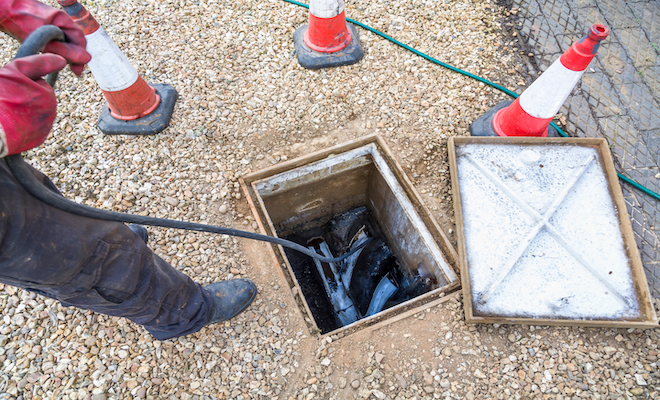
This will be done by using drain rods or strong water jets. Whatever the method, this will be done by lifting the cover off the inspection chamber outside your house. The rods or hose will then be inserted down this access point into your drains. Once they are clear, your specialist may test the drains by running water down them.
Finding the Break
Now your drains are running freely again; you may be happy. However, it’s necessary for the break or damage to be located; otherwise, they will simply clog up again over time.
To find the break, CCTV equipment is usually set up. For this, your drain specialist will use the inspection chamber to access your drains again. A camera at the end of a long cable will be fed through your drain system. Above ground, at the other end of the cable, will be a screen. This picks up the images of your drain from the camera, helping your specialist find and diagnose the problem.
Replacing or Patching the Drain Line
What happens next will depend on what problem you’re having with the drain and the ease of access to it.
For a small crack or break and minimal disruption, a patch or liner repair may be all that’s required. Strong textile material such as fibreglass will be impregnated with resin and inserted inside your pipe. A plastic ‘bladder’ is then inflated inside your pipe to push and mould the liner onto the sides of the pipe. This is deflated again and removed, leaving the liner in place.
The resin on the liner is then left to cure, so it’s hardened and strong. The camera is usually inserted back into the pipework to check that the liner is correctly in place.
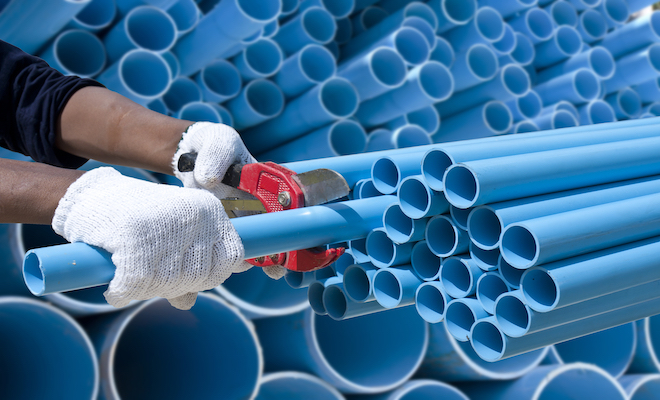
Once cured, water may be run through the drains to check it’s all working fine without further blockages or leaks.
However, it may be decided that replacement is a better option for drains that are more severely damaged or not functioning effectively.
For this, a hole will be dug around the drain line so it is fully accessible. The broken section of the pipe will be cut out and removed. It’s likely that the new piping will be made of strong plastic, even if your old pipes are made of clay. This is perfectly fine, as the new section will be the same width and joined securely. The new section will be cut to size and fitted with couplings at either end to provide a watertight seal.
Once the new section is in place, the hole will be filled in. To support your drain line and prevent future strain or displacement, a layer of gravel will be added first.
Repairing Other Damage
The final stage of repairing a drain line is to rectify any surface damage. This may be laying new turf or a new patio. This could be something you do yourself or get a landscape gardener to do.
Your drain specialist may also make some recommendations to avoid future problems. If so, it’s a good idea to follow this advice.
DIY Drain Line Repairs
It’s usually wise to leave drain repairs to a specialist. However, if you’re used to carrying out home repairs and other DIY jobs, you may decide to give it a go. Repairing a drain by yourself can be a messy job. So, if you fancy the DIY approach to save money, be prepared.
Often, your drain starts from the back or front of your house, where the soil pipe from your toilet leaves the house. It should follow a straight line to your property boundary. So, this gives you a good idea of where to start looking. You should have an inspection cover near the house. A look down here will tell you whether you have a blockage, but foul smells are another sign of a problem.
To clear the blockage, the safest method is to buy a set of drain rods. These cost around £20 from DIY stores.
Once cleared, you’ll need to find the original cause of the problem. A sunken or wet patch along where you suspect the drain runs is one of the most obvious ways to find the problem area to dig up. However, if there’s no obvious place to start looking, paying for a survey is the best option.
Once you know where to dig, you’ll need to work carefully as you may end up causing more damage to your drain line. Drain lines aren’t usually deep underground, although the depth of drain lines varies, so go slowly. You’ll need a spade to dig up the soft ground in the garden. If your drain runs underneath concrete or tarmac, it’s advisable to call out a specialist rather than try to break this up yourself.
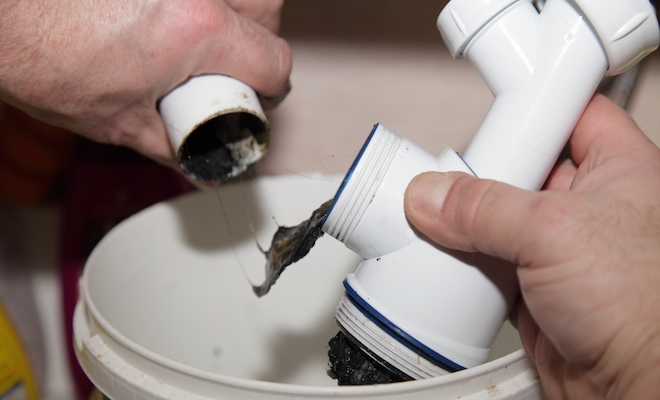
Make sure you uncover the whole area surrounding your broken drain, so you can cut out the problem section easily. And make sure that the area is clear from loose debris while you work.
You’ll need to measure the broken section and diameter of the pipe, so you can buy the correct sized piece to fit. You’ll also need something to fix it in place. Two flexible couplings are usually the best option. The couplings and pipe should cost around £30.
For clay pipes, you may need a power tool such as an angle grinder to make a clean, straight cut. A plastic pipe can be cut with a hand saw. It’s a good idea to wear protective gear when doing this. If you don’t own any tools, this will add to your cost. However, it’s not advisable to use power tools without any experience or guidance.
Once you’ve cut and removed the broken section, it’s time to fit the new section, which should be cut to size. On each end of this new section, you’ll need to place your couplings. Put your new pipe section in the gap and move it into place. The couplings should sit covering each join. These usually have jubilee clips to secure them in place. You tighten these by turning a screw.
You’ll want your new section to be properly supported. So, you’ll need to gently fill your hole with a fine gravel or pea shingle first. You can buy this for around £3 per bag from DIY and garden centres.Then, fill the rest of the hole in with the material you originally dug out.
Building Regulations for Drainage
If you’re having repair work done to an existing drain, then thankfully, you don’t need to worry about building regulations.
However, if you’re extending your home and your drain line runs where you’re planning to build, then you’ll need to move your drains. Work will need to comply with Approved Document H of the Building Regulations. These include making sure the drain route is kept away from building foundations and similar obstructions. Plus, it needs to be set deep enough to allow the pipework to run down from your house and into the sewer.
Planning Permission for Drainage
For repairs and any other minor work on your drain line, you won’t need planning permission.
If you’re moving or making significant alterations to your drains, then you may need permission. The best way to check this is by contacting your local authority’s planning department. You should also check which parts of the drain belong to you, your neighbours and the water company before starting any work.
You can’t make any alterations to drains that are shared or are part of the mains sewer. If you have a problem or wish to move these, you must contact the water company responsible for them.
How to Find & Hire a Drainage Specialist
Because they’re hidden underground, it can be hard to spot and fix a problem with a drain. That’s why there are specialist companies who can help with drains repairs. They have the right tools and knowledge to find and properly fix the issue.
However, finding a reputable company is always a good idea, which can take a little research. Use a local company if possible, so it’s easier to call them back if necessary.
To decide if they’re a reputable company, check how many years they’ve been trading for and look at reviews of their service. Invite them to come and look at the problem and ask plenty of questions. If they’re cagey about giving you answers, it may be wise to find someone else to carry out the job.
FAQs
Alternatively, you could try running hot water through instead. You could try using drainage rods to remove the debris or contact a drain specialist for more serious blockages. If you’re not sure what’s causing the blockage, this may be the best option.
Check over your seals to find the one that’s failed. Take this with you to your local DIY or hardware shop to find the correct replacement. If you’re not confident with DIY, call in a reputable plumber to help.
Sources
https://www.coastaldrains.co.uk/blog/how-to-fix-a-broken-drain-pipe-underground/
https://www.citizensadvice.org.uk/consumer/water/water-supply/sewerage/who-is-responsible-for-repairing-drains-and-sewers/
https://www.drainagesuperstore.co.uk/help-and-advice/product-guides/underground-drainage/how-do-you-know-if-you-have-a-collapsed-drain/
https://www.planningportal.co.uk/info/200130/common_projects/15/drains_and_sewers/
https://www.ofwat.gov.uk/nonhouseholds/surface-water-drainage/reducing-your-surface-water/
https://www.unitedutilities.com/globalassets/documents/pdf/8051-6234-a-simple-guide-to-pipes-drains-and-sewers-2019-web-acc3.pdf






